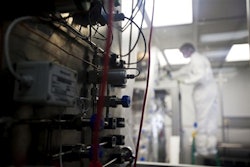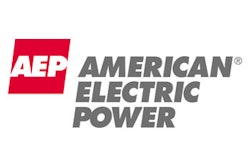The inevitability of clean energy has recently reached a tipping point of awareness that has unleashed a flood of renewable investments, particularly in Europe and Asia. Conventional power utilities should participate in the wave in order to secure their future, which means building new supply chains and developing new supplier relationships or extending existing ones into new areas. While there are many similarities in capital and operating expenditures and HSE considerations, conventional supply chain staff will climb a steep learning curve dealing with important differences in the channels of purchasing, technological focus, and financing methods. Dedicated external experts who are knowledgeable in both thermal power and renewables should be leveraged during the establishment of the renewables supply chain in order to avoid project delays and cost overruns that would otherwise accompany the learning experience.
While the transition from fossil fuels to clean energy will take time, the existence of the trend itself is no longer in question. Technological advances are narrowing the gap in costs for solar and wind generation compared to electricity generated from conventional power technologies, including those fueled by renewables such as biodiesel or methanol, and even natural gas. Furthermore, federal, state and municipal governments are promoting and incentivizing the use of clean (non fossil fuel-derived) power.
To ensure their own survival, power utilities need to build large-scale green supply chains, and the need is imminent. Power utilities will have dramatically less time to adjust to the trend toward renewables than they had to adopt gas and steam turbine technology, as globalization and information technology have significantly shortened the historical industry development cycle.1 The current trajectory leaves leading power companies only about 5-10 years to define and anchor their position in renewable energies at the outset of a transition that may last for several decades.
Many cost and profit drivers between thermal power and renewables are similar, which would lead one to believe that the existing supply chain staff can handle the job. At a high level, capital requirements in both thermal power and renewables are driven by turbine generators, civil works, and real estate. Operating costs are driven by replacement parts and electrical storage and distribution. Ecological concerns and permitting affect the timing, size, and type of installations.
Similarities in cost drivers for oil and gas and renewable energy operations
Cost driver |
Thermal power |
Renewables |
Capital |
HRSG, steam and gas turbines, civil works |
Wind turbine generators, foundations |
Operation |
Fuel, replacement parts, electrical storage and distribution |
Marine services, Replacement parts, electrical storage and distribution |
Maintenance & repair |
Warranty, preventive and predictive maintenance, repair |
Warranty, preventive and predictive maintenance, repair |
HSE |
Emissions, ecological impact |
Ecological impact |
R&D |
Incremental efficiency gains (e.g., gas turbines) |
Massive R&D programs |
However, there are important strategic and organizational management differences, especially in procurement, supply chain, technology evaluation, and financing. For example:
- Whereas thermal power procurement often favors single sourcing and the use of Engineering, Procurement and Construction firms (EPCs), renewable energy producers often favor multi-sourcing.
- While conventional power procurement departments source primarily or even only from well-established suppliers, renewables suppliers are paying closer attention to new suppliers, including those from emerging economies.
- While both thermal power technology and renewables providers focus on steam and gas turbines, renewables operators tend to focus on "next generation" platforms and new models, and also closely track new component technologies that could affect the evolution of long-run unit cost.
- While thermal power projects are often government-funded, renewables providers are exploring new models of collaboration such as operator-supplier partnerships and UN-sponsored carbon swaps. In the partnership model, intellectual property protection is often more critical than in more mature conventional power generation supply chains.
- Finally, while conventional supply has focused on plant and equipment, real estate has become a more important driver for biomass-based technologies since land is required to grow the feedstock for conversion to biofuel.
Differences in supply chain design requirements for thermal power and renewable energy operations
Area |
Thermal power |
Renewables |
Procurement |
Single-source |
Multi-source |
EPC |
Emerging economy suppliers |
|
Technology evaluation |
Original equipment (e.g., steam and gas turbines) |
Next Generation Platforms |
Financing |
Government funded or backed, consortia |
Operator-supplier partnerships, government-backed, or Clean Development Mechanism (UN) |
R&D and intellectual property |
Patent protection during long periods of commercialization |
Protection of rapidly-developing intellectual property throughout research and development |
It takes supply chain competency in both oil/gas and renewables to bridge the gap without cost and schedule overruns. Operations executives should set five enablers in place to support supply chain development for renewables:
- Management consensus on the 'first principles' of supply chain management, such as whether or not to outsource certain activities; whether to single source; whether the target should be cost, profit, or volume; and whether corporate affiliates should be evaluated on an arms' length basis.
- Specialized resources with procurement and supply chain expertise in both oil/gas and renewables. Ideally, this will include experts who have worked on both procurement for large oil and gas capital programs and also for large wind farm or solar arrays.
- Access to specialized benchmarks and forecasts related to critical equipment and service categories that could drive project economics, for example biofuels, battery storage, and special-purpose vessels.
- A strong supplier certification program that can verify and ensure the long-run viability of new and unproven suppliers, as well as of large existing suppliers, if large capital expenditures and long timeframes ("deep pockets") will be required to stay in business.
- Knowledge of registration procedures for Clean Development Mechanism (CDM) projects under the UN Framework Convention on Climate Change, since carbon offset registration can accelerate the return on investment in wind, solar, biomass and hydropower projects.
For more information, please visit www.bostonstrategy.com.























